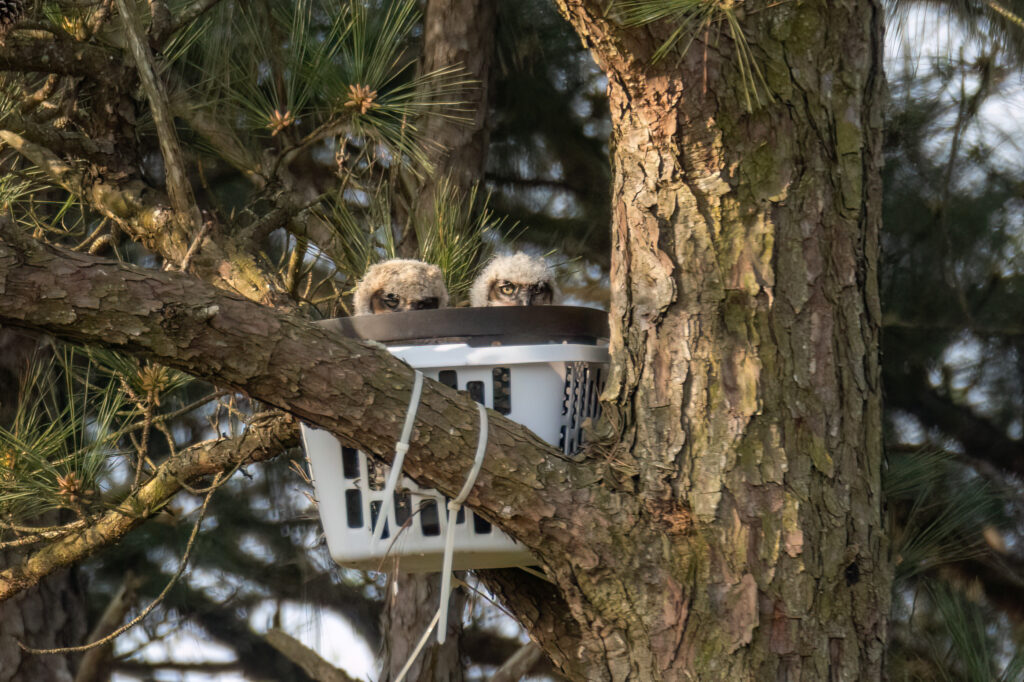New Volunteer in the Middle Peninsula Chapter Gets Off to a Great Start
–Contributed by Luann Johnson, VMN-Middle Peninsula Chapter

David Yeager is one of the newest trainees in the VMN-Middle Peninsula Chapter, having graduated earlier this year. Little did the chapter leaders know of his dedication and commitment to the spirit of Virginia Master Naturalists, most especially to all things to do with birds. With all the volunteer hours he has accumulated, he was already certified by the end of his training.
David came to the chapter’s rescue on July 9th, when the guest speaker for our monthly Continuing Education segment was unable to join us. David did a fabulous presentation on a recent adventure he had while birding.
On one of his frequent visits through Machicomoco State Park, Dave noticed a not-so-substantial Great Horned Owl nest in a crotch of a tree. Subsequent storms decimated the nest and one of the two nestlings was found on the ground. Working with Julie Wobig from Tidewater Animal Rescue, the owlet was delivered to The Mended Nest for rehab where it was nursed back to health over several days. Meanwhile, back at the park, enlisting the assistance of a local tree service/tree climbers, and under the advice of Julie, a replacement nest made of a laundry basket was engineered and hoisted to an appropriate site 40 feet off the ground near the location of the original nest. Both chicks were introduced to the new habitat, were cared for by the parents and soon fledged. Due to Dave’s knowledge of the park and the owl nest, he was instrumental in the owlets’ rescue and renesting.
David has also championed prothonotary warblers by building nest boxes, installing them at Gloucester’s Beaverdam Park, and monitoring nests in other locations in our region. He has logged over 700 hours in Cornell/Audubon Bird Counts/Observations/Monitoring so far this year.
The Middle Peninsula Chapter, and our 5-county area, is very fortunate to have someone as dedicated as David Yeager among our volunteers.
The Great Horned Owl re-nesting at Machicomoco couldn’t have been successful without Lysa at The Mended Nest for the rehab, Julie Wobig from Tidewater Wildlife Rescue for the re-nesting guidance, Noah and Nolan from Smokey’s Tree Service, and Kendall and Gee for the hours they put in keeping an eye on the chick that somehow remained in the tree with no nest.


New Volunteer in the Middle Peninsula Chapter Gets Off to a Great Start Read Post »



